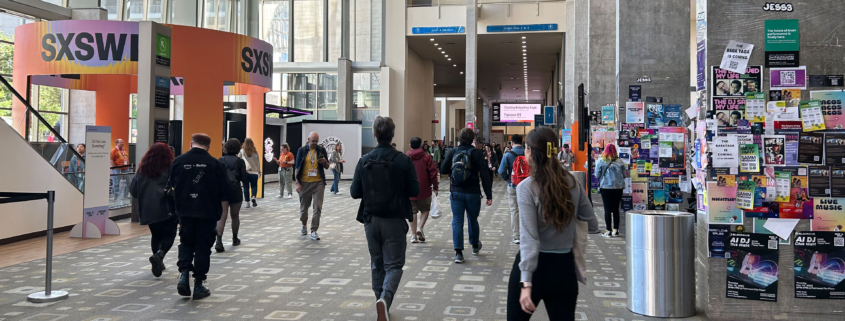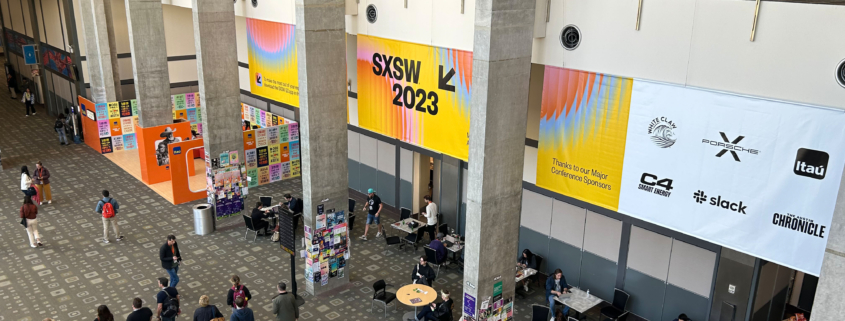As any marketing manager will readily confirm, your brand needs to create – through its specific characteristics relating to history, market, target groups, distribution channels, competitors and objectives – an operational marketing ecosystem of its own that, from a strategic, creative and media perspective, is faster and smoother than before. The aim here is to facilitate a consistent, compelling and high-performing brand experience along the purchase decision processes.
In order to meet these challenges, visionary marketers from both client and agency sides are now coming together in a collaborative process to ask the C-question: how do we configure a marketing system partnership that does away with the tedious, coordination-heavy back and forth between special agencies, lead agencies and marketing departments? Which systemic configuration is more capable of addressing the direct challenges of the market and the specificities of the brand and company? Which functions from strategy, consulting, creation, digital, data and media should be integrated and to what degree? On which shared basis relating to content, processes and technology? And how can a new ecosystem start quickly, be kept flexible in its timing and evolve and scale new requirements?
One thing was clear to everyone involved in this forward-looking project from the outset: no run-of-the-mill creative pitch can give a valid response to such a strategic question. After all, how can a creative blind date, held quickly with usually a minimum of interaction, provide any lasting answers? Instead, the job requires scrutiny of the objectives together, mapping out the ways and means of achieving them and, of course, complete transparency and mutual trust. Which is exactly the approach taken by the players in four phases within a period of around three months. Here, it’s all about coming together, moving forwards and getting to the heart of the matter.
The process starts off with an initial workshop where a vision is outlined together. Projective techniques help to synchronise ideas and visions and define success criteria in precise terms. And the day is rounded off with a step back into today’s reality and its deficits, a first draft of the central core function of the new ecosystem and a few initial thoughts about the business model.
The next step after this first draft is to design the processes between the now weighted and precisely defined roles and responsibilities. Accordingly, a barrier-free, flexible, synchronous and highly efficient end-to-end configuration is the result of the second workshop.
The HR and IT requirements are still being determined at this point, so that the technological collaboration infrastructure can be implemented and the recruitment of the team started in the third phase. The business model, including any corporate law parameters, is discussed and finalised with the utmost transparency, together with the change management plan.
The fourth phase – the ramp-up – begins with an inception workshop for the entire team and focuses on an initial representative project. This endurance test offers a wealth of experience and improvement opportunities that can be addressed together in a way that is open, professional and entirely devoid of ego.
This is how strategic partnerships are formed – strategic partnerships that result in living and breathing customised marketing ecosystems that work quickly, efficiently and powerfully. It is said that this is the best configuration for developing, retaining and managing a winning, holistic brand experience.
We spoke to three C-level brand managers who decided to transfer at least part of their marketing activities to such an integrated configuration. Here are their experiences and recommendations.
NEW CONNECTION TO THE FUTURE
10 questions for Michael Falkensteiner, Head of Brand O2/Telefónica Deutschland, about the individually designed marketing ecosystem “Bubble”
1. You made the decision to bundle parts of your marketing activities in an integrated agency set-up. Which functions did you ask to be integrated in the model?
Michael Falkensteiner: If you have big and long-term goals, you need a set-up that can respond to any market contingencies quickly and with pinpoint accuracy. That’s why our new ecosystem consists of a core team combining three fundamental skills: strategy, consulting and creation. This core is the nerve centre and acts like a bubble. In other words, it is always moving and draws on additional specialists from other skill areas whenever needed, whether for a short time or an extended period. Either internally from its own ecosystem or externally by working with others on a partnership basis.
2. What were and still are your reasons for doing this?
Michael Falkensteiner: Past experience has shown that models that restrict themselves to a conventional lead agency tend to fall short of the mark – the “closed shop” principle. After all, agility and cross-functionality are more significant than ever these days. It was particularly important for us to have a customised model in which not only the lead level was guaranteed to work perfectly, but the interfaces between the individual specialist areas as well.
3. What is the geographical scope of your branding activities?
Michael Falkensteiner: We are focusing on German-speaking markets to begin with.
4. Please tell us how it all began – when did the collaboration start?
Michael Falkensteiner: We interacted with the agency early on – in great depth and taking in all angles of the collaboration. What does a modern agency-client system need to provide? How do we guarantee agility? How can we make sure that partner agencies and special agencies work towards the same targets as resolutely as the lead agency? This, roughly, was the beginning of the “Serviceplan Bubble” agency that Serviceplan went on to set up. And it was the beginning of an enduringly productive dialogue – the basis for a successful collaboration.
5. How have you achieved your preferred agency set-up?
Michael Falkensteiner: A set-up like the Bubble is the result of a thorough, open and, above all, honest analysis. As a basis for a successful and transparent set-up, we have analysed a number of fundamental areas: avoiding errors from the past, challenging the status quo and comparing short- and long-term brand objectives. To achieve this with maximum efficiency, we developed – in the course of several workshops together with the agency – a whole new system that was tailored towards our needs: the Bubble.
6. What was essential to your success?
Michael Falkensteiner: The most crucial aspect was how we went about it. This is because open communication and close cooperation allowed us to overcome the barriers between the client, agency and other partners. We believe that we will only achieve our goals by investing a lot of personal effort, by being radically honest and by resolutely questioning the status quo.
7. Were there any specific hurdles?
Michael Falkensteiner: Anyone who is striving for change will first have to contend with naysayers and doubters. So the question is not whether there are obstacles but rather how we can clear them out of the way. In our experience, it is best to get everyone on board for this journey insofar as possible. Until we achieve our goal: a change for the better.
8. How has the set-up changed since the beginning?
Michael Falkensteiner: Even though we are only at the beginning, one key factor is already proving its worth – the fact that we have a living, breathing, organic system. This means that we are in a constant state of controlled change. If something isn’t quite right, we analyse the problem together with the agency and implement possible solutions directly.
9. What were the challenges or opportunities where the integrated cooperation paid off?
Michael Falkensteiner: As I said, our collaboration is still at the beginning. But we are confident that integrated cooperation doesn’t depend on either crises or opportunities. With the Bubble, we worked with the agency to develop a system that enables us to respond efficiently and effectively to all possible market situations.
10. What are you planning for the future?
Michael Falkensteiner: In the past, the O2 brand has always been good for surprises in the communications market. That will continue to be the case in the future as well. But more than anything, however, we want to make ourselves strong – for our customers. They should get to benefit more than ever before from our brand. Thanks to the Bubble, the way we are now positioned means that you’ll definitely be hearing a lot from us in the future …
METRO x SERVICEPLAN INTEGRATED
10 questions for Gisele Musa, VP Global Branding at Metro AG, about the evolution of its tailor-made marketing ecosystem “Metro own Agency”
1. You made the decision to bundle parts of your marketing activities in an integrated agency set-up. Which functions did you ask to be integrated in the model?
Gisela Musa: In 2018, Serviceplan crafted a tailor-made and dedicated agency perfectly fitting to our vision, structure and needs. With this dedicated agency, Metro own Agency, we are working at eye level in all relevant skills, such as strategy, creative, digital, social media and brand PR.
2. What were and still are your reasons for doing this?
Gisela Musa: I believe in the value of lasting relationships. And I’m convinced that the deeper an agency knows a client – and all the things that happen behind the scenes – the higher the likelihood that the partnership will grow stronger and, along with it, the quality of the work you do together. And this takes time and dedication. Previous years have proven that, due to an increasing complexity for marketeers, a constant, customised and close cooperative branding ecosystem is the right agency model for us to face the challenges ahead. With the objective of further strengthening the brand and driving forward the development of a holistic brand experience for Metro.
3. What is the geographical scope of your branding activities?
Gisela Musa: As the Global Branding department at Metro, we are responsible for the branding agenda for 26 countries and all Metro wholesale sister companies within the group.
4. Please tell us how it all began – when did the collaboration start?
Gisela Musa: In mid-2014, after a multi-step chemistry process with cautiously selected agencies, Metro started working with Serviceplan on a project basis. The type and dimension of projects were very different back then.
5. How have you achieved your preferred agency set-up?
Gisela Musa: Right from the outset we have been constantly monitoring, analysing and optimising our partnership, which is built on transparency, honesty, important conversations and a lot of dedication from both sides. And a fair share of long nights as well. Today’s agency is therefore not only the result or the consequences of the past but also the starting point for the future.
6. What was essential to your success?
Gisela Musa: A milestone in our collaboration was in 2018 when Serviceplan developed the Metro own Agency – the first-ever tailor-made and dedicated agency by Serviceplan.
7. Were there any specific hurdles?
Gisela Musa: One of the major challenges was the launch phase of this newly crafted agency. We jointly focused additional management attention on the phase of bringing the defined vision into performing mode, e.g. finding the right skilled team, defining, and more importantly, establishing the right structure, the relevant tools and easy and efficient ways of working.
8. How has the set-up changed since the beginning?
Gisela Musa: Not everything comes up roses, right? It has been a long journey for us. Over the past six years our relationship has advanced significantly, and we feel encouraged to work with this fully integrated and dedicated agency, with the potential to flexibly embed additional skills and talents when needed.
9. What were the challenges or opportunities where the integrated cooperation paid off?
Gisela Musa: It was during the biggest challenge that our collaboration experienced its strongest success. In early 2020, when COVID-19 reached pandemic level, from one day to the next we had to step up and find totally new ways to support our customers – the independent businesses – to survive the economic, social and health consequences. Almost on a weekly basis we developed and provided ready-to-use communication packages to our national Metro marketeers in order to support their local customers with the most recent information and with additional relevant products and services enabling them to transform and to keep on running their businesses. If we didn’t have such a close collaboration with the accounts and creative teams, that wouldn’t have been possible.
10. What are you planning for the future?
Gisela Musa: I would say that we still have plenty to do. There will always be areas that we need to improve as partners but, more importantly, we need to ensure we keep developing our people while bringing new blood to the teams. Also, the brand has evolved significantly, expanding its scope from talking mainly with our independent professional customers to reaching a broader audience. With the Metro social impact “Nurturing the success of independent business owners fosters a wider variety of choices – for everyone”, we have now entered into a dialogue with the customers of our customers. Crafting such a rich communication programme will require innovative thinking, testing and learning, as well as a strong heart to keep it – and us – all together.
SHAPING OPPORTUNITIES TOGETHER
10 questions for Felix Withöft from stairlift company Lifta about the opportunities and possibilities of the integrated Lifta agency team cooperation
1. You made the decision to bundle parts of your marketing activities in an integrated agency set-up. Which functions did you ask to be integrated in the model?
Felix Withöft: Traditionally, German consumers know us from our ads in ADAC Motorwelt and Prisma. These days, however, the internet is our most important source of leads. The central component for our Lifta agency team is therefore the combination of creation and digital, flanked by strategy and media, both online and offline.
2. What were and still are your reasons for doing this?
Felix Withöft: We used to have a “conventional” agency with a strong focus on print and TV as well as an astonishing number of small agencies specialising in online and digital. It was only a matter of time before the complexity got out of hand. Now everything is bundled in a single team. Which means shorter communication channels, faster decision-making processes and better integration of measures – across all channels.
3. What is the geographical scope of your branding activities?
Felix Withöft: With Lifta and our other brands, we are mainly active in Germany and Austria. In other words, the primary focus of our collaboration is on German-speaking markets. As a Cologne-based family company, it was really important for us to have our supporting team here in the city. The Cologne House of Communication is only a five-minute walk from our marketing unit. Even in these times of the coronavirus pandemic and collaboration tools, personal interaction is still very close to our hearts.
4. Please tell us how it all began – when did the collaboration start?
Felix Withöft: Right at the beginning we had our media strategy and planning audited by the PlanNet team. This team included experts with whom I had already worked very successfully in the past tackling other marketing challenges. This soon led to further interesting points of contact at the House of Communication. And shortly after that, we asked the team to make a pitch for our creative budget as well. And they nailed it!
5. How have you achieved your preferred agency set-up?
Felix Withöft: We started off with a small core team to develop the central components of our new brand campaign: strategy, creation, media and digital. Then we noticed very quickly that we would need a “dedicated team” in future – a team that would work with us on an ongoing basis on our areas of focus and continually develop them, and that would also be able to look after our other brands. But that, at the same time, was always adaptable depending on the situation.
6. What was essential to your success?
Felix Withöft: Well-defined responsibilities for both parties and clearly established interfaces. Right from the very beginning we established an SPOC on both sides with a view to maximising transparency across all workstreams and ensuring fast decision-making channels.
7. Were there any specific hurdles?
Felix Withöft: It isn’t easy to set clear priorities and reduce complexity at the start. To begin with, our new agency team was rather swamped by the sheer number of subject areas, products and priorities. It would be better to plan a suitable familiarisation phase from the outset rather than wanting too much from day one. Otherwise you’ll soon have to face a reality check.
8. How has the set-up changed since the beginning?
Felix Withöft: Having started with a small core team, we are now gradually expanding additional disciplines such as PR, social media, performance, SEO/SEA, etc. It is also important for us to constantly have new momentum and fresh expertise to draw on but also to ensure continuity within the team at the same time. To have people in our team who know our company, our target groups and our products. People who we can discuss these matters with as equals.
9. What were the challenges or opportunities where the integrated cooperation paid off?
Felix Withöft: We are currently working on a whole new brand campaign. This is the first time that our company has taken an integrated 360° cross-channel approach. Without this networked and close collaboration throughout the various disciplines and skills, I can’t imagine how else we would have launched it in such a short space of time.
10. What are you planning for the future?
Felix Withöft: We have set ourselves a common goal: to take the stigma out of stairlifts so that they are no longer seen by consumers as a last resort. And to convince senior citizens earlier on that stairlifts are “the key to self-determination”. This is something that will be extremely important to the baby boomer generation in particular when they “come of age” in the next few years. People from this generation want to remain in the prime of life.
This article first appeared in TWELVE, the Serviceplan Group’s magazine for brands, media and communication. In the seventh issue, you will find further inspiring articles, essays and interviews by and with prominent guest authors and renowned experts centred around the magazine’s theme “Rethink!”. The e-paper is available here.







